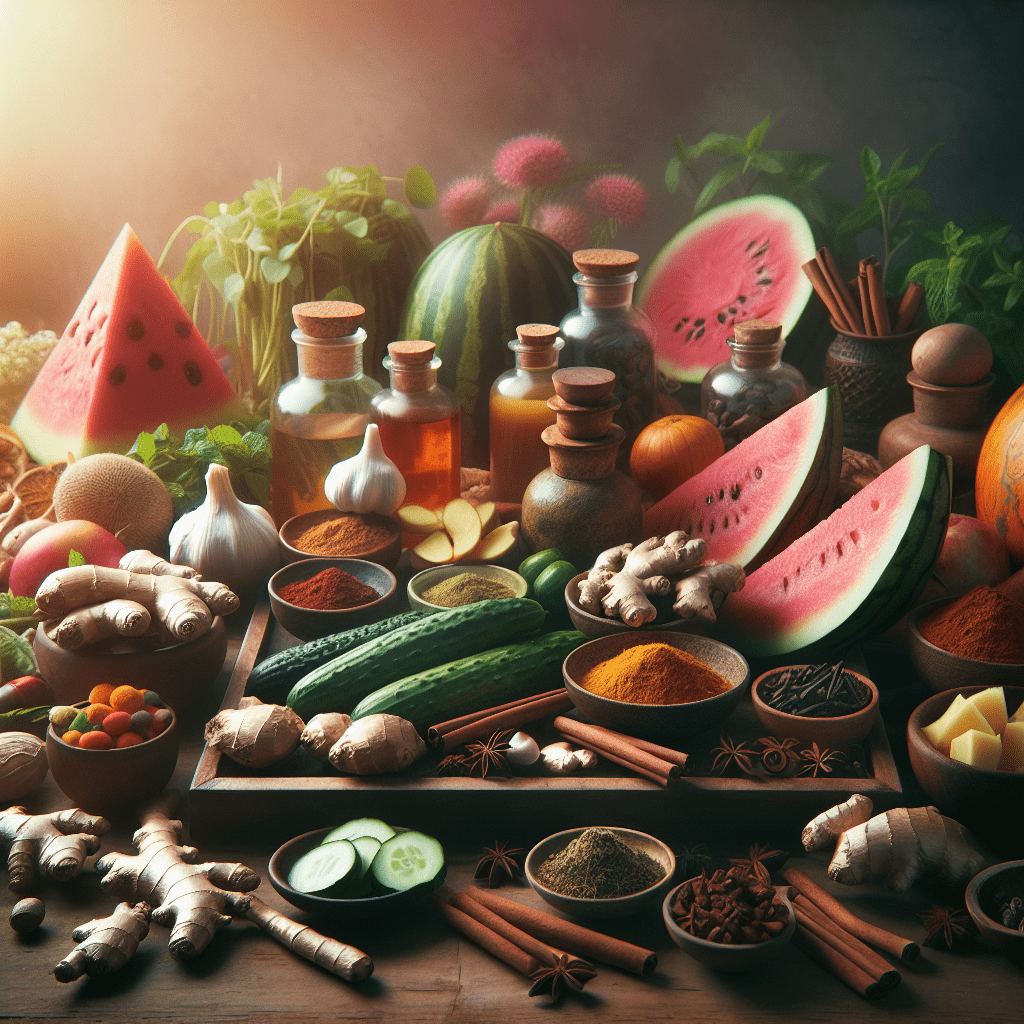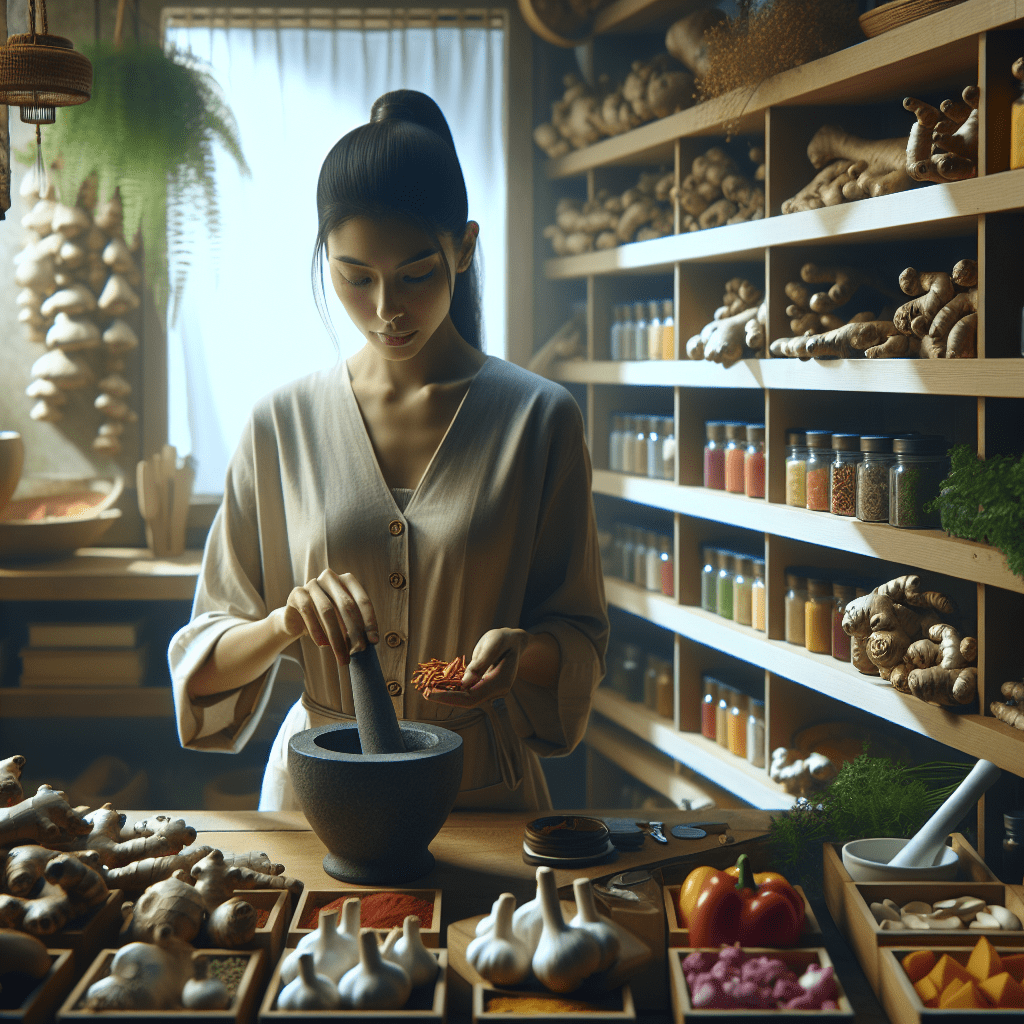In the misty mountains of ancient China, healers would prescribe ginger tea for digestive ailments rather than pills. Across the world in Greece, Hippocrates famously declared, “Let food be thy medicine and medicine be thy food.” These weren’t just poetic statements—they were practical health guidelines that shaped civilizations for millennia. Ancient cultures intrinsically understood what modern science is now rediscovering: the food on our plates can be our most powerful medicine.
The concept of food as medicine isn’t new. Greeks consumed onions for their healing properties, Romans relied on garlic for strength, and Mesoamerican civilizations valued chile peppers to treat headaches and pain. These weren’t random choices but part of sophisticated holistic health systems developed through centuries of observation and practice. Today, as we face a crisis of chronic diseases largely driven by poor nutrition, this ancient wisdom offers a beacon of hope—especially when organized into practical tools like a food is medicine chart.
The Science Behind Food as Medicine
What our ancestors knew intuitively, science now confirms with laboratory precision. The foods we eat contain thousands of bioactive compounds—naturally occurring chemicals that interact with our bodies at the cellular level, influencing everything from inflammation to immune function.
Polyphenols, perhaps the most studied of these compounds, act as powerful antioxidants, protecting our cells from oxidative damage. Found abundantly in colorful berries, dark chocolate, and green tea, these compounds help explain why cultures with diets rich in these foods often experience lower rates of heart disease and certain cancers.
“These aren’t just nutrients—they’re information,” explains Dr. Mark Hyman, a pioneer in functional medicine. “They communicate with our genes, telling them how to express themselves.”
Take turmeric, for instance. This bright yellow spice contains curcumin, a compound with such potent anti-inflammatory effects that it rivals some pharmaceutical drugs—without the side effects. In Eastern medicine, turmeric has been used for over 4,000 years to treat everything from digestive issues to joint pain. Now, Western research validates these applications with hundreds of studies demonstrating curcumin’s therapeutic potential.
Similarly, garlic—a staple in Mediterranean and Asian cuisines—contains allicin, which has remarkable antimicrobial properties. Ancient Romans provided garlic to their soldiers and laborers to increase their strength and combat illness. Modern research confirms garlic’s ability to reduce blood pressure, improve cholesterol profiles, and even fight certain infections.
The list goes on:
- Berries contain anthocyanins that protect brain function and improve memory
- Cruciferous vegetables like broccoli and kale contain glucosinolates that help detoxify harmful compounds
- Green tea provides catechins that boost metabolism and protect against cellular damage
- Fermented foods deliver probiotics that support gut health, which increasingly appears connected to everything from immunity to mental health
These examples represent just a tiny fraction of the medicinal compounds found in everyday foods. What makes these discoveries so exciting is that they validate traditional Eastern approaches to nutrition, where food has always been considered a primary medicine.
Practical Applications: Creating Your Food Is Medicine Chart
Understanding the medicinal properties of foods is one thing—incorporating them into daily life is another. This is where a food is medicine chart becomes invaluable. Unlike rigid diet plans that focus on calories or macronutrients, a food is medicine chart organizes foods by their therapeutic properties, empowering you to address specific health concerns through targeted nutrition.
Imagine experiencing joint pain and consulting your food is medicine chart to find foods rich in natural anti-inflammatories. You might discover that adding ginger, turmeric, fatty fish, and tart cherries could help reduce your discomfort. Or perhaps you’re concerned about heart health—your chart would guide you toward foods high in heart-protective compounds like the omega-3 fatty acids in salmon, the nitrates in beets, and the soluble fiber in oats.
Creating your own food is medicine chart doesn’t require a medical degree. Start by organizing foods according to common health concerns:
- Anti-inflammatory foods: Turmeric, ginger, fatty fish, berries, olive oil
- Immune-supporting foods: Garlic, mushrooms, citrus fruits, colorful vegetables
- Digestive health foods: Fermented foods, fiber-rich vegetables, ginger, peppermint
- Heart-healthy foods: Fatty fish, nuts, seeds, leafy greens, berries
- Brain-boosting foods: Fatty fish, blueberries, dark chocolate, nuts, leafy greens
Beyond addressing specific concerns, a food is medicine chart helps shift your perspective on eating. Food becomes more than just calories or fleeting pleasure—it becomes a powerful tool for creating health. This perspective aligns perfectly with Eastern medicine’s holistic approach, where balance and prevention take precedence over treating isolated symptoms.
“When we view food as medicine, every meal becomes an opportunity to heal,” says Dr. Terry Wahls, who used food to recover from debilitating multiple sclerosis. “It’s the most fundamental, accessible form of healthcare available to everyone.”
The beauty of a food is medicine chart is its accessibility. While pharmaceutical interventions often come with side effects and high costs, food medicine is available to anyone with access to whole foods. A well-designed food is medicine chart democratizes health knowledge, putting the power of prevention and even treatment into people’s hands.
Bridging Ancient Wisdom and Modern Technology
This convergence of ancient nutritional wisdom and modern scientific validation is precisely what drives EASTCHI AI, the innovative platform from HerbalsZen. By integrating 2,000-year-old Eastern medical knowledge with cutting-edge artificial intelligence, EASTCHI AI brings the concept of food as medicine into the 21st century.
Eastern medicine has always recognized that each person has a unique constitutional type that influences how foods affect their body. What’s healing for one person might be aggravating for another. The Five Element Theory of Traditional Chinese Medicine, for instance, categorizes people according to elements (Wood, Fire, Earth, Metal, Water), each with specific dietary needs and sensitivities.
EASTCHI AI builds on this foundation, analyzing your individual constitution to create personalized nutrition recommendations. Rather than generic advice, you receive guidance tailored to your specific body type, current health status, and even the changing seasons—a critical factor in Eastern nutrition that’s often overlooked in Western approaches.
For example, in Eastern medicine, cooling foods like cucumber and watermelon are recommended during summer to balance the external heat, while warming foods like ginger and cinnamon help strengthen the body during winter according to seasonal nutrition principles. EASTCHI AI incorporates these seasonal considerations alongside modern nutritional science to create truly holistic recommendations.
The platform also embraces the Eastern concept that food is not just physical sustenance but energetic medicine. Foods are categorized not only by their vitamin and mineral content but by their energetic properties—whether they’re warming or cooling, drying or moistening, and which organ systems they support.
This represents a significant evolution beyond the standard Western food chart or pyramid. While conventional nutrition focuses primarily on macronutrients and calories, a food is medicine chart informed by Eastern wisdom considers how foods interact with your specific body and circumstances. It’s nutrition as an art and science, personalized to support your unique health journey.
Creating Your Health Revolution
The journey toward viewing food as medicine represents nothing less than a personal health revolution. It shifts the paradigm from reactive healthcare to proactive self-care, from dependence on external interventions to empowered daily choices.
To begin creating your own food is medicine chart:
Start with a foundation of whole foods. Processed foods rarely offer medicinal benefits and often contain compounds that work against healing.
Research the therapeutic properties of common foods. Reliable sources include scientific databases, books on functional medicine, and traditional Eastern medicine texts.
Identify your specific health concerns or goals. Are you addressing inflammation, supporting heart health, or improving digestion? This helps focus your research.
Organize your findings visually. Create a simple chart that categorizes foods by their healing properties, making it easy to reference when planning meals.
Experiment mindfully. Pay attention to how different foods affect your energy, digestion, mood, and other aspects of wellbeing.
Remember that creating a food is medicine chart isn’t about following a rigid prescription. It’s about developing a deeper relationship with food—understanding its effects on your body and using that knowledge to support your health. As you become more attuned to these connections, you’ll naturally gravitate toward foods that make you feel vibrant and avoid those that don’t serve your wellbeing.
This approach reflects the fundamental philosophy of Eastern medicine: that health isn’t merely the absence of disease but a state of balance and vitality as practiced in natural healing methods. When we use food intentionally to create this balance, we align with natural healing principles that have sustained human health for millennia.
The food is medicine chart becomes more than just a reference tool—it becomes a map for your health journey, guiding you toward choices that support your body’s innate healing capacity. In a world of confusing and contradictory nutrition advice, this personalized approach offers clarity and connection to both ancient wisdom and cutting-edge science.
As Hippocrates understood thousands of years ago, food can indeed be our most powerful medicine. By creating your own food is medicine chart and embracing the holistic principles that unite Eastern and Western nutrition science, you’re not just changing your diet—you’re revolutionizing your relationship with health itself.
The path to wellness begins with your next meal. What medicine will you choose to put on your plate today?




